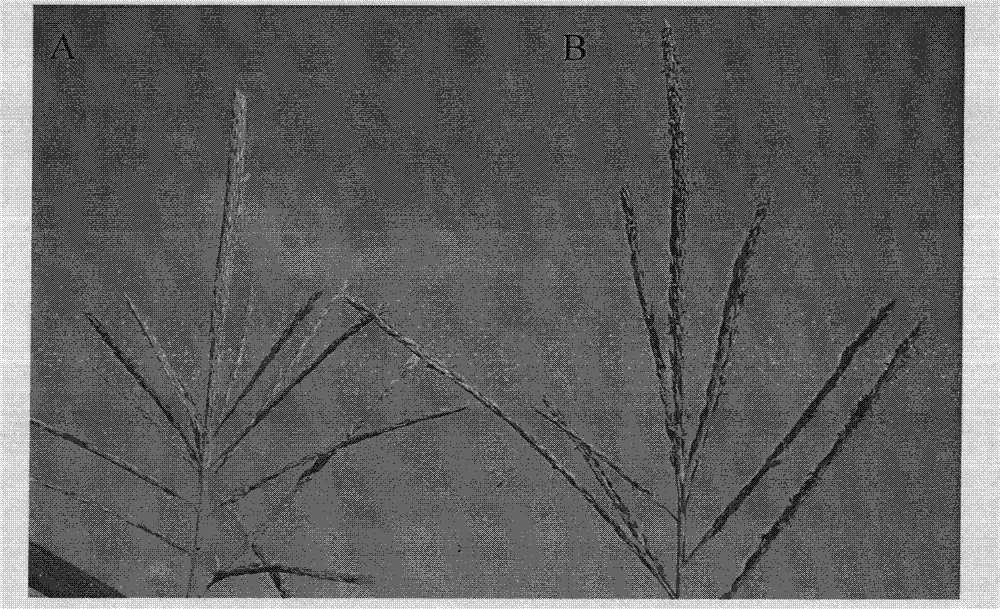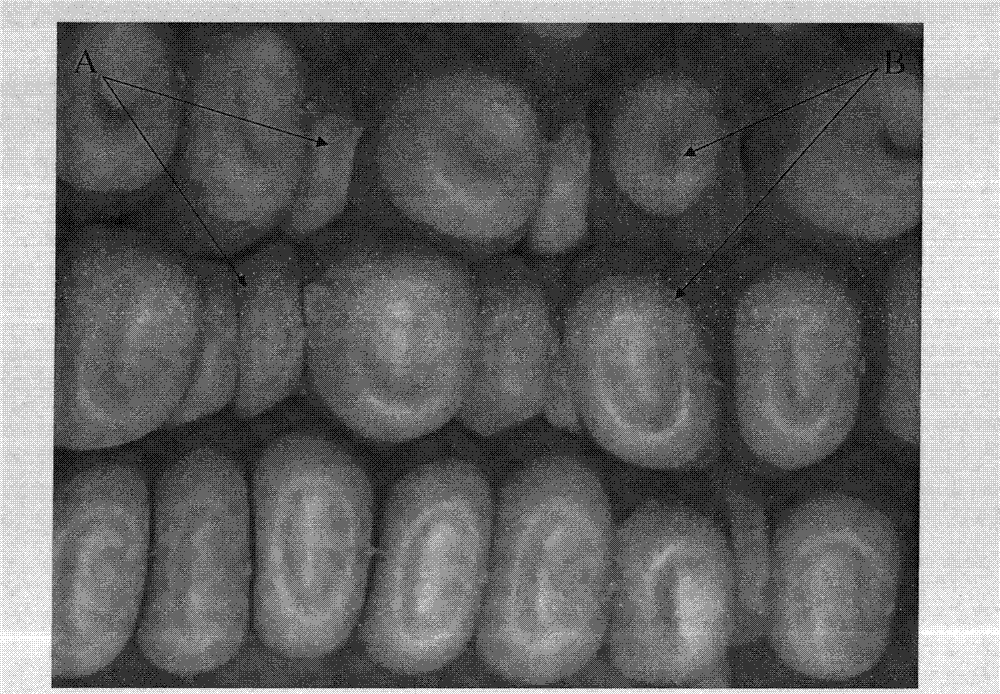High-efficiency seed labeling method for propagation of plant male sterile line
A male sterility, plant technology, applied in the field of plant genetic breeding and seed production
- Summary
- Abstract
- Description
- Claims
- Application Information
AI Technical Summary
Problems solved by technology
Method used
Image
Examples
Embodiment 1
[0046] The amplification of embodiment 1Ms45 wild-type allele
[0047] The present invention takes the ms45 male sterile mutant in Table 1 as an example to specifically illustrate the implementation. Firstly, the wild-type allele of ms45 was expanded, which was derived from the inbred line B73, and its sequence is shown in SEQ ID No: 1. We used B73 as a template and referred to the B73 genome sequence (www.maizesequence.org) to design primers to amplify the entire expression element of the gene. The amplification primers are as follows: Ms45F: 5'tgaattcTGCTGAGTTTCTCTTGGGTTATCC 3', Ms45R: 5'tcccgggGGTTGCGCATGAAATAGGGGT 3 '. An EcoRI restriction site was added to the 5' end of the upstream amplification primer, and a SmaI restriction site was added to the 5' end of the downstream amplification primer. The amplification reaction system was: template DNA 2 μL, primer Ms45F 0.5 μL, primer Ms45R 0.5 μL, dNTP 1.6 μL, 10×Buffer 2 μL, high-fidelity taq enzyme 0.3 μL, ddH2O 13.1 μL. ...
Embodiment 2M
[0048] The amplification of embodiment 2Mn1 interfering fragment
[0049] The Mn1 gene encodes a cell wall invertase protein, and the inactivation of this gene will affect the development of the endosperm, resulting in smaller grains ( figure 2shown), but did not affect embryo and plant development. The present invention uses RNAi technology to silence the Mn1 gene. The interference fragment is derived from the inbred line B73, which contains a forward interference fragment, as shown in SEQ ID No: 2, and a reverse interference fragment, such as SEQ ID No: 3, and the intron that forms the hairpin structure in the middle. We have used B73 cDNA as a template, referring to the B73 genome sequence (www.maizesequence.org), and designed primers to amplify the specific conserved sequence of the gene. The amplification primers are as follows: RNAiMn1bF: 5'tggatccggtgaccTAAGTTTCGCTTCGGCGTGC3', RNAiMn1bR 5'gactagtCCACACGATGTTGCCCCATAC 3' . BamHI and BstEII restriction sites were adde...
Embodiment 3
[0050] The cloning of embodiment 3Mn1 gene promoter
[0051] The present invention uses the promoter controlling the grain size gene Mn1 to activate the interference fragment of the gene, and the gene is specially expressed in the endosperm, so the mRNA that is transcribed by the promoter only exists in the endosperm cells. The promoter is derived from the genomic DNA of the maize inbred line B73. The specific sequence is shown in SEQ ID No: 4. We have used the B73 genomic DNA as a template and referred to the B73 genome sequence (www.maizesequence.org) to design primers for the gene The promoter was amplified, and the amplification primers were as follows: Mn1pro bF: 5'atcccggGCTCGCATGAGAGAACAACCA 3', Mn1pro bR: 5'gcaagcttGGGGGTGCTATTTGTACTGTGC 3'. A SmaI restriction site was added to the 5' end of the upstream amplification primer, and a HindIII restriction site was added to the 5' end of the downstream amplification primer. The amplification reaction system was: template DN...
PUM
 Login to View More
Login to View More Abstract
Description
Claims
Application Information
 Login to View More
Login to View More - R&D
- Intellectual Property
- Life Sciences
- Materials
- Tech Scout
- Unparalleled Data Quality
- Higher Quality Content
- 60% Fewer Hallucinations
Browse by: Latest US Patents, China's latest patents, Technical Efficacy Thesaurus, Application Domain, Technology Topic, Popular Technical Reports.
© 2025 PatSnap. All rights reserved.Legal|Privacy policy|Modern Slavery Act Transparency Statement|Sitemap|About US| Contact US: help@patsnap.com



